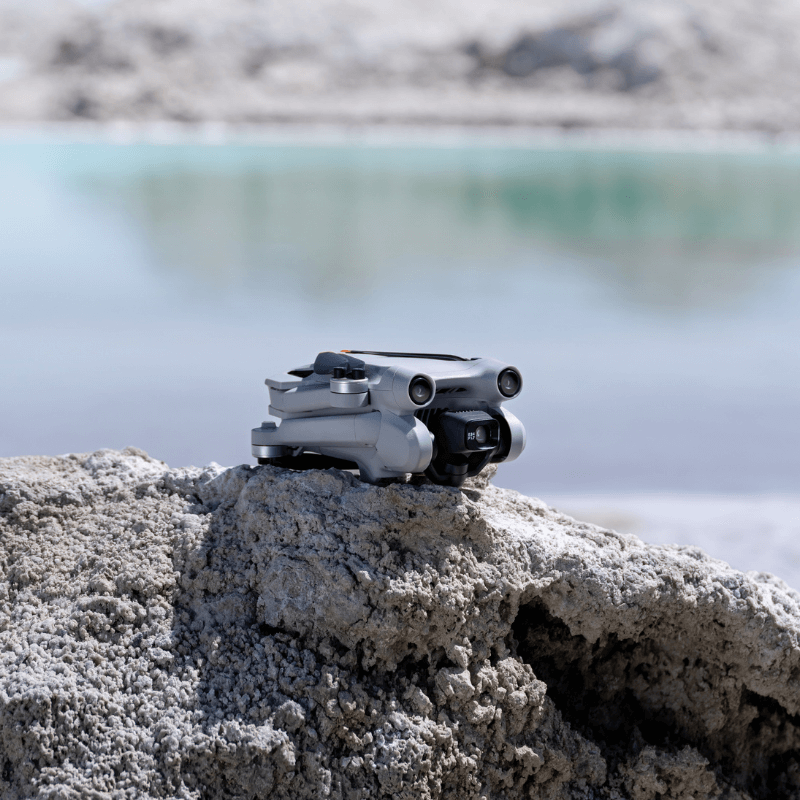
Products
Published on 10 May 2022
James Willoughby
DJI Mini Series: Which drone should you buy?
In-depth comparison between the DJI Mini 3 Pro, Mini 3, Mini 2 SE, Mini 2, and Mini SE. Find out the difference between the camera, flight performance and controllers, among other key features, and decide which Mini drone is best for you. ... Read More

In-depth comparison between the DJI Mini Series: The DJI Mini 3, Mini 3 Pro, Mini 2 SE, Mini 2, and Mini SE;
A look at the drones' key features, including camera, flight performance and controllers;
Find out which drone is best for you: The Mini 3 Pro is the most powerful of all the Mini drones, but for budget options, the Mini 3, in particular, and also the Mini 2 SE are worth a look.
The DJI Mini Series has come a long way since the original Mavic Mini was released in October 2019.
Since then, this ground-breaking collection of drones has evolved through iterations such as the Mini 2, Mini SE, and the 2022 launches of the DJI Mini 3 Pro and DJI Mini 3.
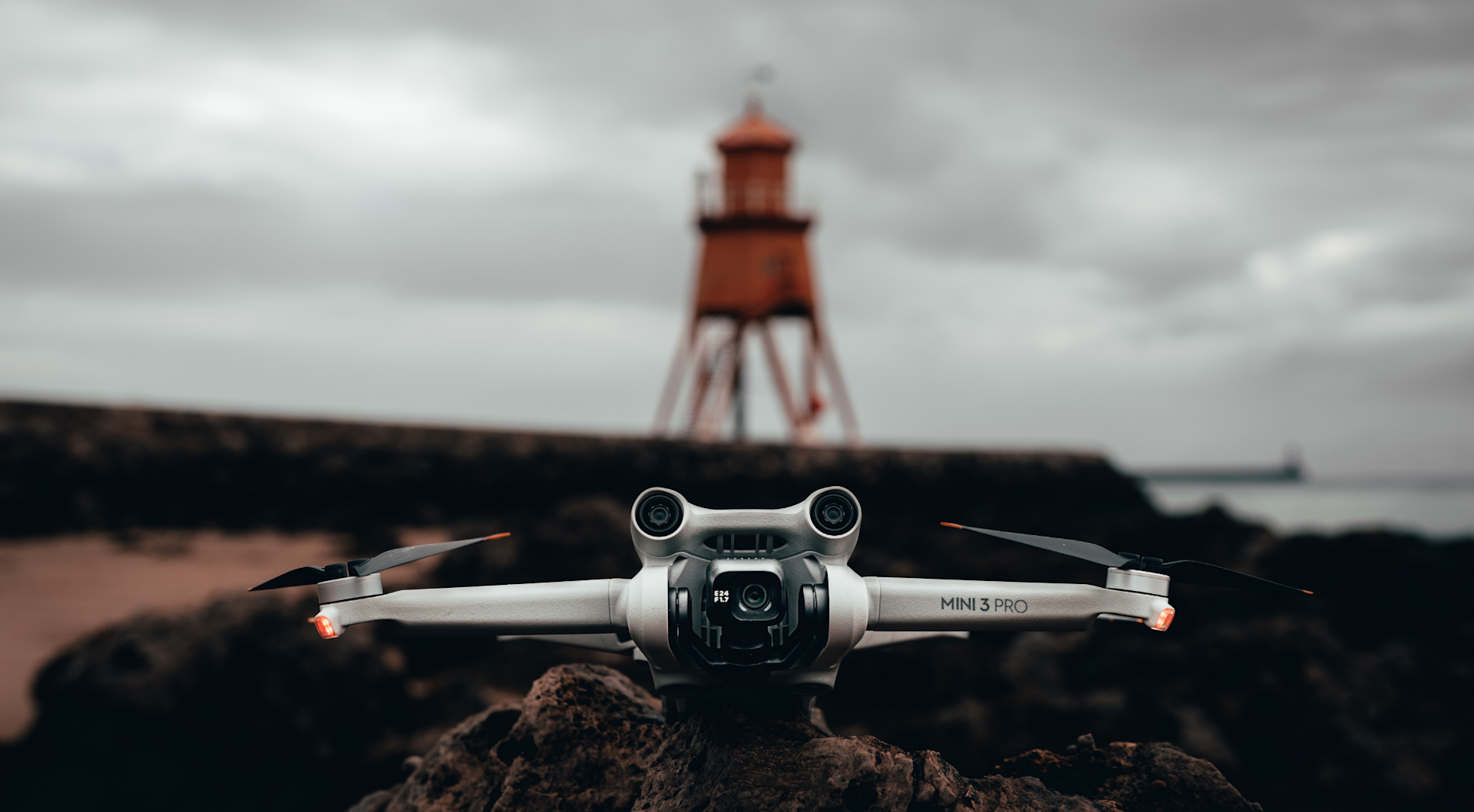
And in March 2023, DJI unveiled another iteration: The DJI Mini 2 SE.
This impressive drone series has redefined what is possible in such compact airframes, with the Mini 3 platforms, in particular, featuring enhanced flight performance, upgraded camera and the addition of a supercool rotating gimbal to enable landscape and portrait content capture.
So, with numerous DJI Mini drones in the mix, which one should you go for?
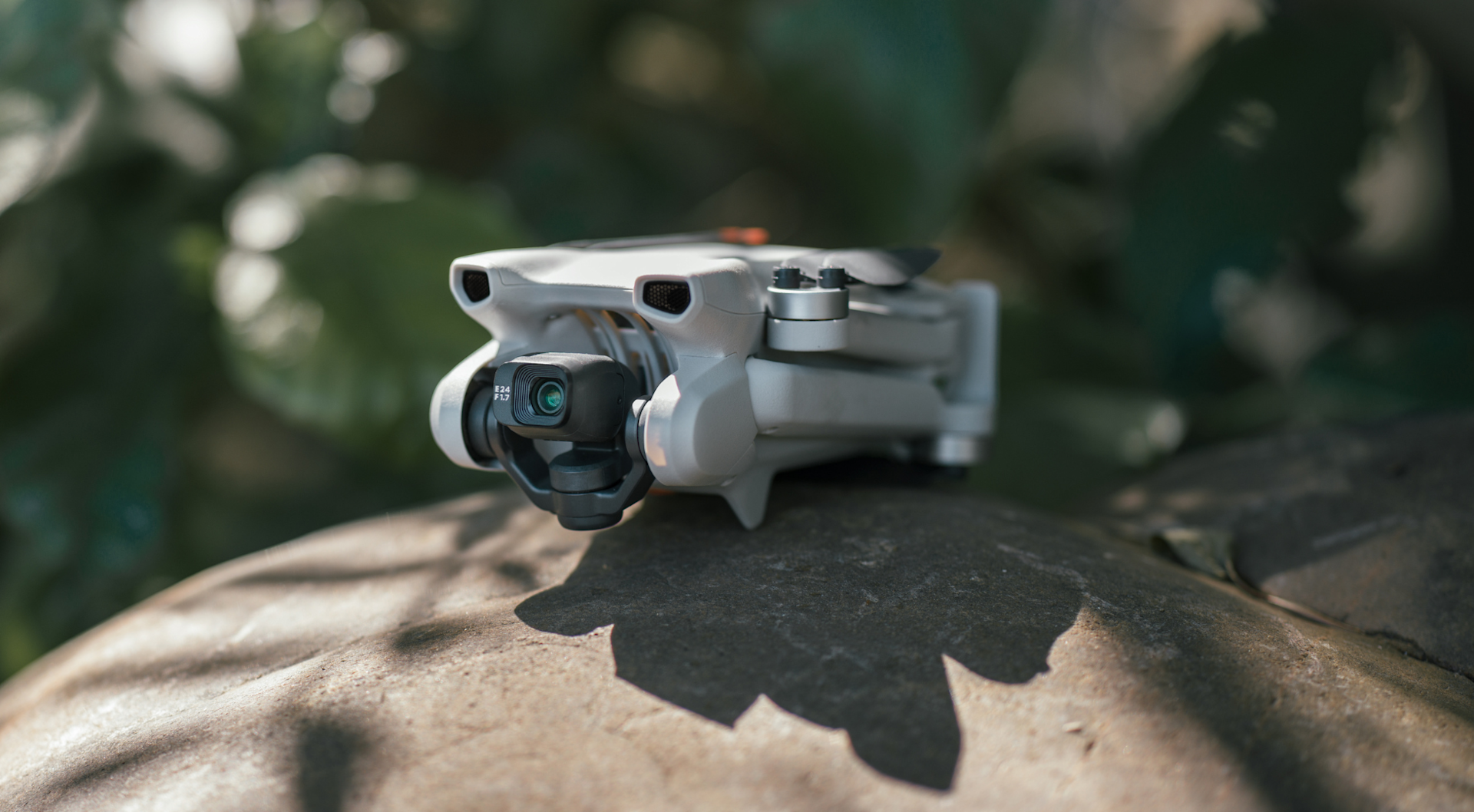
In a nutshell, the Mini 3 Pro is the most powerful and complete Mini Series drone to date, but is the most expensive.
The Mini 3 is a slightly watered-down version of the Mini 3 Pro, but does come with a smaller price tag.
Meanwhile, DJI's newest entry, the Mini 2 SE, is a blend between the Mini SE and Mini 2, and is a great budget drone option.
As for the others: The Mini 2 and the Mini SE are still worth a mention in this post, but it is likely that the three newest platforms - Mini 3 Pro, Mini 3, and Mini 2 SE - will be the stand-out options for most operators, depending on need and budget.
We have excluded the original Mavic Mini from this post as this drone is no longer in production.
To help you make an informed decision, and to see how the Series has evolved, read our in-depth comparison guide between the Mini 3, Mini 3 Pro, Mini 2 SE, Mini 2, and Mini SE.
DJI Mini 3 vs Mini 3 Pro vs Mini 2 SE vs Mini 2 vs Mini SE - Key Features Overview
For a quick overview, here are the key features of the DJI Mini 3, Mini 3 Pro, Mini 2 SE, Mini 2, and Mini SE.
Mini 3 | Mini 3 Pro | Mini 2 SE | Mini SE | Mini 2 | |
Weight | 248g | <249 g | 246 g | <249 g | <249 g |
Sensor | 1/1.3" CMOS | 1/1.3" CMOS | 1/2.3-inch CMOS | 1/2.3" CMOS | 1/2.3" CMOS |
Camera | 12 MP | 48 MP | 12 MP | 12 MP | 12 MP |
Video | 4K/30fps video | 4K/60fps video | 2.7k/30fps video | 2.7K/30fps video | 4K/30fps video |
True Vertical Shooting | Yes | Yes | No | No | No |
Max Flight Time | 38 mins | 34 mins | 31 mins | 30 mins | 31 mins |
Max Speed | 16 m/s | 16 m/s (S Mode) | 16 m/s | 13 m/s (S Mode) | 16 m/s (S Mode) |
Max Wind Speed Resistance | 10.7 m/s (Scale 5) | 10.7 m/s (Scale 5) | 10.7 m/s (Level 5) | 8.5 m/s to 10.5m/s (Scale 5) | 8.5 m/s to 10.5m/s (Scale 5) |
Max Transmission (CE) | 6km; Live View (remote controller): 720p/30fps | 8km; Live View (remote controller):1080p/30fps | 6km; Live View (remote controller):1080p/30fps 720p/30fps | 2km; Live View (remote controller):1080p/30fps 720p/30fps | 6km; Live View (remote controller):1080p/30fps 720p/30fps |
Sensing System | Downward | Tri-directional (Forward, Backward, Downward) | Downward | Downward | Downward |
Price (Correct as of March 15, 2023) | • Drone (no RC): £439 • Drone (RC-N1 Controller): £519 • Drone (DJI RC Controller): £669 • Fly More Combo (with RC-N1 Controller): £678 • Fly More Combo (with DJI RC Controller): £828 | • Drone (no RC): £639 • Drone (with RC-N1 Controller): £709 • Drone (with DJI RC Controller): £859 | • Standard: £309 • Fly More Combo: 439 | • Standard: £269 • Fly More Combo: £359 | • Standard: £419 • Fly More Combo: £549 |
DJI Mini Series: Design
The Mini 3 Pro and Mini 3 have revamped designs compared to the other three Mini drones.
For instance, look at the difference between the Mini 3 Pro...
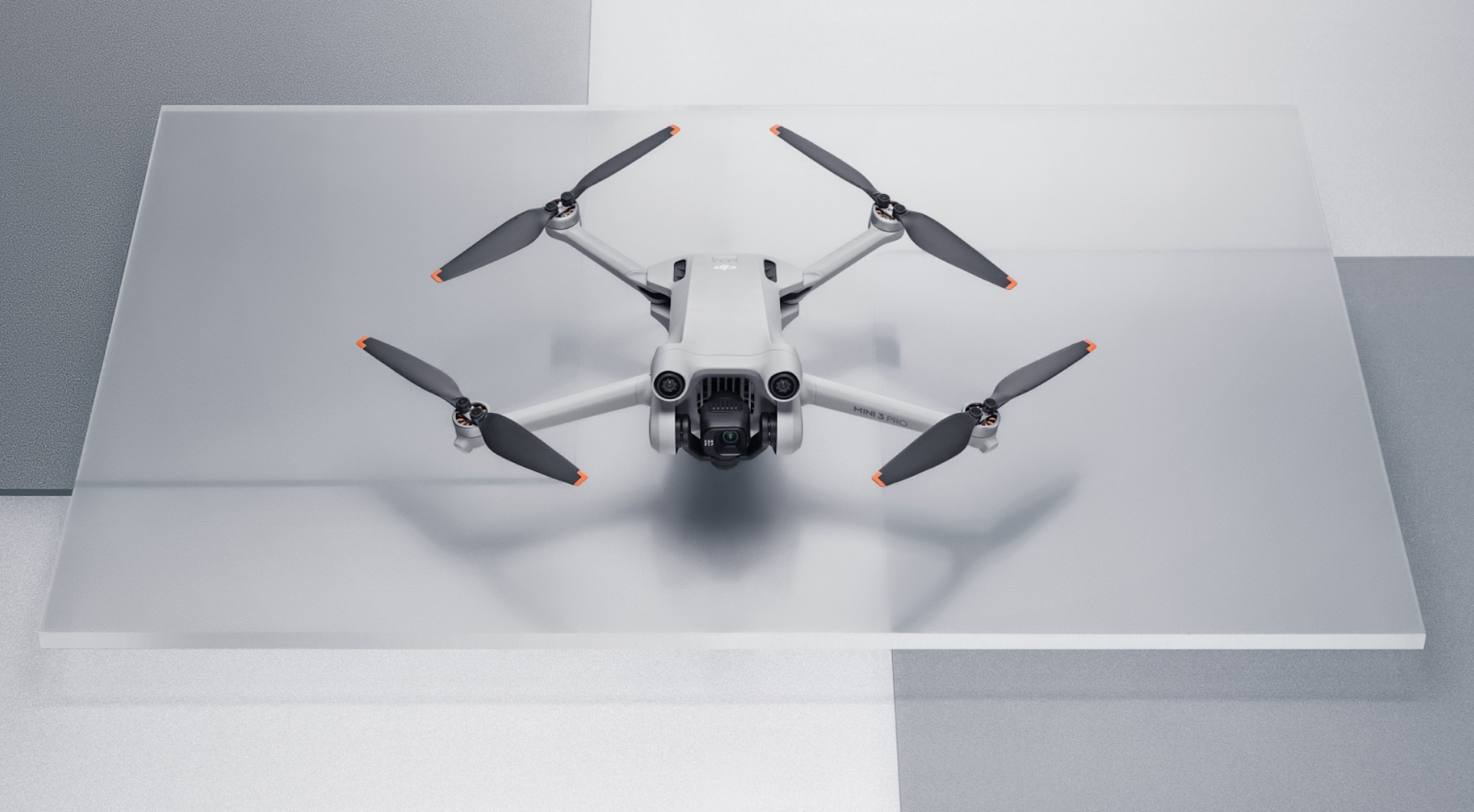
...and Mini 3...
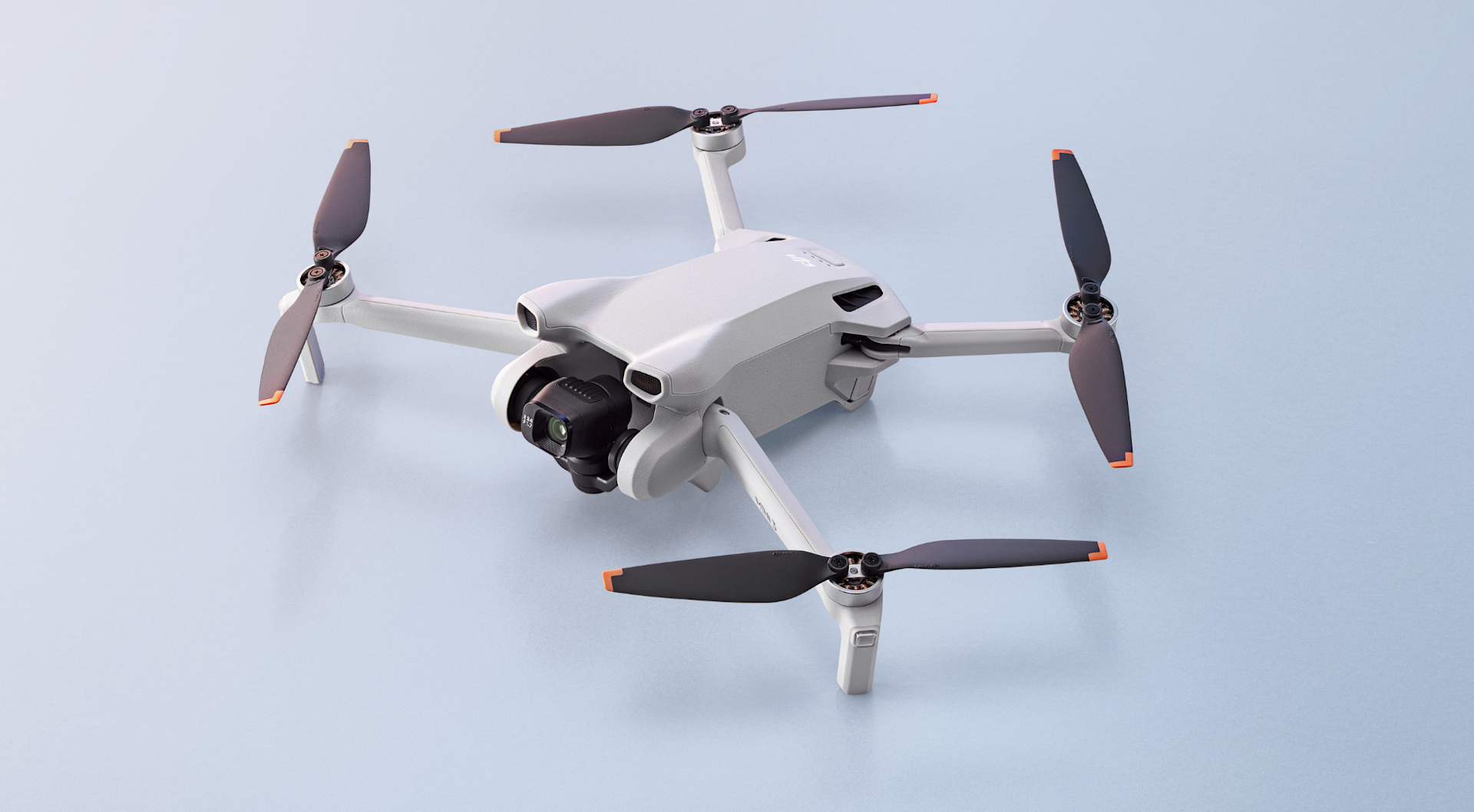
...compared to the Mini 2 SE...

...and the Mini 2, Mini SE, and Mavic Mini, which all have a similar appearance.

DJI says that the Mini 3 Pro and Mini 3's new appearance is intended to optimise flight performance: With larger propellers, an aerodynamic body tilt, and a powerful obstacle sensing system, the streamlined design allows for increased flight time and safety.
With all of this in mind, the Mini 3 Pro and Mini 3 are the largest in size of all the Mini drones, but are still tiny.
All of the DJI Mini drones are sub 250g - weighing around the same as the average smartphone - which places them in the safest category of drones.
In the UK, this means that operators can fly the DJI Mini drones (provided they remain sub 250g) in the A1 subcategory of the Open Category, which allows flights over uninvolved people, but not over crowds. These operations can be conducted without drone training, such as the A2 CofC or the GVC - although operators can take these courses if they wish to grow their drone programmes with heavier drones.
Their tiny frames, coupled with the iconic folding design, make these drones extremely portable, perfect for capturing content on the go.

While the Mini 3 Pro has larger propellers, the Mini 2 SE, Mini 2 and Mini SE benefit from their own set of strong props - distinguished via the orange tips - to enhance their own flight performance, which help to enhance their flight performance.

The table below provides an overview of some of the key design specifications for each DJI Mini drone.
Mini 3 | Mini 3 Pro | Mini 2 SE | Mini SE | Mini 2 | |
Take-off Weight | 248 g | < 249 g | 246 g | < 249 g | < 249 g |
Folded (L x W x H) | 148 x 90 x 62 mm | 145 x 90 x 62 mm | 138 x 81 x 58 mm | 138 x 81 x 58 mm | 138 x 81 x58 mm |
Unfolded - with propellers (L x W x H) | 251 x 362 x 72 mm | 251 x 362 x 70 mm | 245 x 289 x 56 mm | 245 x 289 x 56 mm | 245 x 289 x 56 mm |
DJI Mini 3 vs Mini 3 Pro vs Mini 2 SE vs Mini 2 vs Mini SE - Camera & Gimbal
Perhaps the biggest differences between the DJI Mini drones are the camera capabilities.
One of the stand-out features of the Mini 3 Pro and Mini 3 is the re-engineered camera gimbal which can rotate to switch between landscape and portrait content capture.
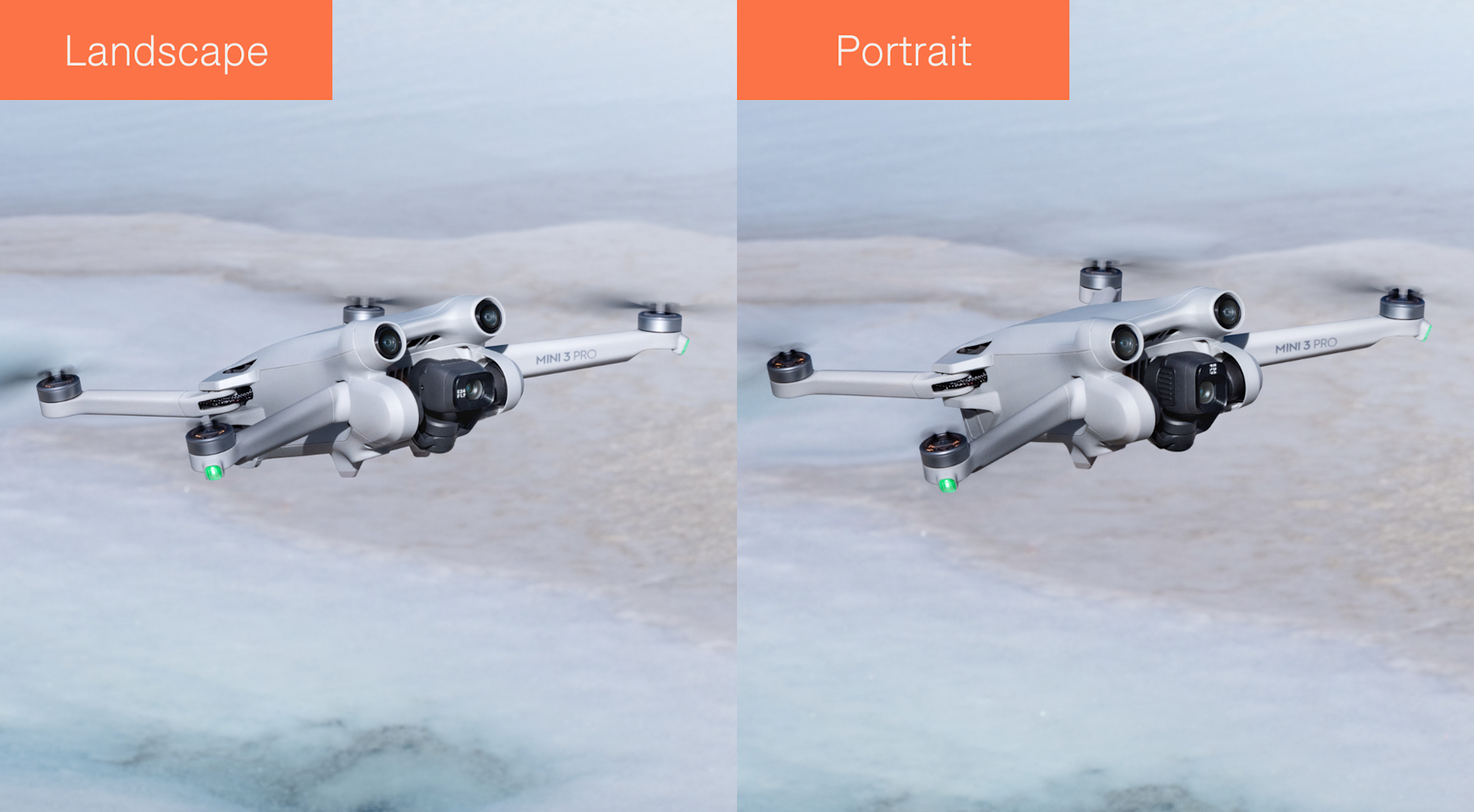
It is a supercool feature and this True Vertical Shooting mode removes the need to digitally crop your images, providing you with quality content all ready for social media.
The gimbal also offers a wider rotation range for low-angle shots.
Video
When it comes to video, the Mini 3 Pro rules the roost, with its ability to shoot 4K/60fps, as well as gorgeous slow motion at 1080@120fps.
The Mini 3 can't quite achieve this, topping out at 4K @ 30fps.
This is the same as the Mini 2 (4K/30fps video), whereas the Mini 2 SE and Mini SE are limited to 2.7K @ 30fps.
Make no mistake, the 4K on the Mini 3 Pro, Mini 3, and Mini 2 yield gorgeous footage but, whether you actually need that quality is up to each operator. After all, 1080p is often enough for YouTube and posting videos on social sites like Facebook and Instagram - and all of the Mini drones can achieve 1080p (FHD) at 60fps.
The Mini 3 Pro can also capture slow motion footage (1920 x 1080 @ 120fps), while the Mini 3 Pro and Mini 3 also support 4K HDR video.

The Mini 3 Pro has a superior bit-rate (150 Mbps), compared to 100Mbps on the Mini 3 and Mini 2, and 40Mbps on the Mini 2 SE and Mini SE.
And for the record, the Mini 3 Pro, Mini 3, and Mini 2 can also capture 2.7K video at 60fps.
The Mini 3 Pro, Mini 3, Mini 2 SE, and Mini 2 also have up to 4x zoom capability - a feature missing on the Mini SE.
Photo
On the photo front, the Mini 3 Pro can capture up to 48MP photos and benefits from a 1/1.3-inch sensor.

The Mini 3 shares the sensor size of the Mini 3 Pro, but it instead tops out at 12MP.
In comparison, the Mini 2 and Mini SE are capable of 12MP imagery but have a smaller-sized 1/2.3” CMOS sensor.

The Mini 3 Pro features dual native ISO and has an ISO range, for photography, of 100-6400.
The Mini 3, Mini 2 SE, Mini 2 and Mini SE have an ISO range of 100-3200.
Mini 3 Pro, Mini 3, Mini 2 SE, and Mini 2 operators can utilise JPEG or RAW photo modes; the Mini SE lacks RAW photo mode.
The Mini 3 Pro also has D-Cinelike Colour mode, which provides more visual information to offer you richer colour possibilities and more flexibility when editing, and benefits from a generous 2.4μm pixel size. Incidentally, the Mini 3 also has 2.4μm 4-in-1 pixels to record clear details and capture quality imagery, even in low-light scenarios.
Interestingly, for all that the Mini drones are great beginner UAVs, the cameras are good enough to be used by some commercial operators for work such as basic rooftop inspection and real estate. Their sub 250g weight is also an advantage, as it means that drone training (A2 CofC/GVC) isn't required. Find out more in our guide to UK Drone Laws. It makes the DJI Mini Series a great platform to use to start a drone business, and build from there.
The table below provides an overview of the camera specifications for all five drones.
Mini 3 | Mini 3 Pro | Mini 2 SE | Mini SE | Mini 2 | |
Sensor | 1/1.3-inch CMOS Effective Pixels: 12 MP | 1/1.3" CMOS Effective Pixels: 48 MP | 1/2.3-inch CMOS Effective Pixels: 12 MP | 1/2.3” CMOS Effective Pixels: 12 MP | 1/2.3” CMOS Effective Pixels: 12 MP |
Lens | FOV: 82.1° Format Equivalent: 24 mm Aperture: f/1.7 Focus: 1 m to ∞ | FOV: 82.1° Format Equivalent: 24 mm Aperture: f/1.7 Focus: 1 m to ∞ | FOV: 83° Format Equivalent: 24 mm Aperture: f/2.8 Focus: 1 m to ∞ | FOV: 83° Format Equivalent: 24 mm Aperture: f/2.8 Focus: 1 m to ∞ | FOV: 83° Format Equivalent: 24 mm Aperture: f/2.8 Focus: 1 m to ∞ |
ISO | Video: 100-3200 Photo: 100-3200 | Video: 100-6400 (Auto) 100-6400 (Manual) Photo: 100-6400 (Auto) 100-6400 (Manual) | Video: 100-3200 Photo: 100-3200 | Video: 100-3200 (Auto) 100-3200 (Manual) Photo: 100-3200 (Auto) 100-3200 (Manual) | Video: 100-3200 (Auto) 100-3200 (Manual) Photo: 100-3200 (Auto) 100-3200 (Manual) |
Shutter Speed | Electronic Shutter: 2-1/8000 s | Electronic Shutter: 2-1/8000 s | Electronic Shutter: 4-1/8000 s | Electronic Shutter: 4-1/8000s | Electronic Shutter: 4-1/8000 s |
Max Image Size | 4000 x 3000 | 4:3: 8064×6048 (48 MP) 4032×3024 (12 MP) 16:9: 4032×2268 (12 MP) | 4000 x 3000 | 4:3: 4000×3000 16:9: 4000×2250 | 4:3: 4000 x 3000 16:9: 4000 x 2250 |
Still Photography Modes | Single Shot: 12 MP Timed: 12 MP JPEG: 2, 3, 5, 7, 10, 15, 20, 30, 60 s JPEG + RAW: 5, 7, 10, 15, 20, 30, 60 s Automatic Exposure Bracketing (AEB): 12 MP, 3 frames at 2/3 EV step Panorama: Sphere, 180°, Wide Angle | Single Shot: 48 MP Timed: 48 MP, JPEG: 2, 3, 5, 7, 10, 15, 20, 30, 60 s JPEG + RAW: 2, 3, 5, 7, 10, 15, 20, 30, 60 s Automatic Exposure Bracketing (AEB): 12 MP, 3/5 frames at 2/3 EV step Panorama: Sphere, 180°, Wide Angle, and Vertical. | Single Shot: 12 MP Timed: 12 MP JPEG: 2, 3, 5, 7, 10, 15, 20, 30, 60 s JPEG + RAW: 5, 7, 10, 15, 20, 30, 60 s Automatic Exposure Bracketing (AEB): 12 MP, 3 frames at 2/3 EV step Panorama: Sphere, 180°, and Wide Angle | Single Shot: 12 MP Timed: 12 MP, 2, 3, 5, 7, 10, 15, 20, 30, 60 s | Single Shot: 12 MP Burst Shooting: N/A Automatic Exposure Bracketing (AEB): 12 MP, 3 frames at 0.7 EV step Timed: 12 MP JPEG: 2, 3, 5, 7, 10, 15, 20, 30, 60 s RAW: 5, 7, 10, 15, 20, 30, 60 s Panorama: Sphere, 180°, and Wide Angle |
Video Resolution | 4K: 3840 x 2160 @ 24, 25, 30 fps 2.7K: 2720 x 1530 @ 24, 25, 30, 48, 50, 60 fps FHD: 1920 x 1080 @ 24, 25, 30, 48, 50, 60 fps | 4K: 3840 x 2160 @ 24, 25, 30, 48, 50, 60 fps 2.7K: 2720 x 1530 @ 24, 25, 30, 48, 50, 60 fps FHD: 1920 x 1080 @ 24, 25, 30, 48, 50, 60 fps Slow Motion: 1920 x 1080 @ 120fps | 2.7K: 2720 x 1530 @ 24, 25, 30 fps FHD: 1920 x 1080 @ 24, 25, 30, 48, 50, 60 fps | 2.7K: 2720 x 1530 @ 24, 25, 30 fps FHD: 1920 x 1080 @ 24, 25, 30, 48, 50, 60 fps | 4K: 3840 x 2160 @ 24, 25, 30 fps 2.7K: 2720 x 1530 @ 24, 25, 30, 48, 50, 60 fps FHD: 1920 x 1080 @ 24, 25, 30, 48, 50, 60 fps |
Max Video Bitrate | 100 Mbps | 150 Mbps | 40 Mbps | 40 Mbps | 100 Mbps |
HDR Mode | Photo: The Single Shot mode supports outputting HDR images. Video: Recording with the 24/25/30fps frame rate supports outputting HDR images | Photo: HDR supported in Single Shot mode Video: HDR supported when shooting at 24/25/30fps | Not supported | Not supported | Not supported |
Digital Zoom | 4K: 2x 2.7K: 3x FHD: 4x | 4K: 2x 2.7K: 3x FHD: 4x | 2.7K: 3× FHD: 4× | No zoom available | 4K: 2x 2.7K: 3x FHD: 4x |
Supported File Formats | FAT32 (≤ 32 GB) exFAT (> 32 GB | FAT32 (≤32 GB) exFAT (>32 GB | FAT32 (≤ 32 GB) exFAT (> 32 GB) | FAT32(≤32 GB exFAT(>32 GB) | FAT32 (≤ 32 GB) exFAT (> 32 GB) |
Photo Formats | JPEG/DNG (RAW) | JPEG/DNG (RAW) | JPEG/DNG (RAW) | JPEG | JPEG/DNG (RAW) |
Video Formats | MP4 (H.264) | MP4/MOV (H.264/H.265) | MP4 (MPEG-4 AVC/H.264) | MP4 (H.264/MPEG-4 AVC) | MP4 (H.264/MPEG-4 AVC) |
Colour Mode | Normal | Normal/D-Cinelike | Normal | Normal | Normal |
Shooting Modes
All of the DJI Mini drones feature a range of smart shooting modes, known as QuickShots, to capture eye-catching content - quickly and easily.
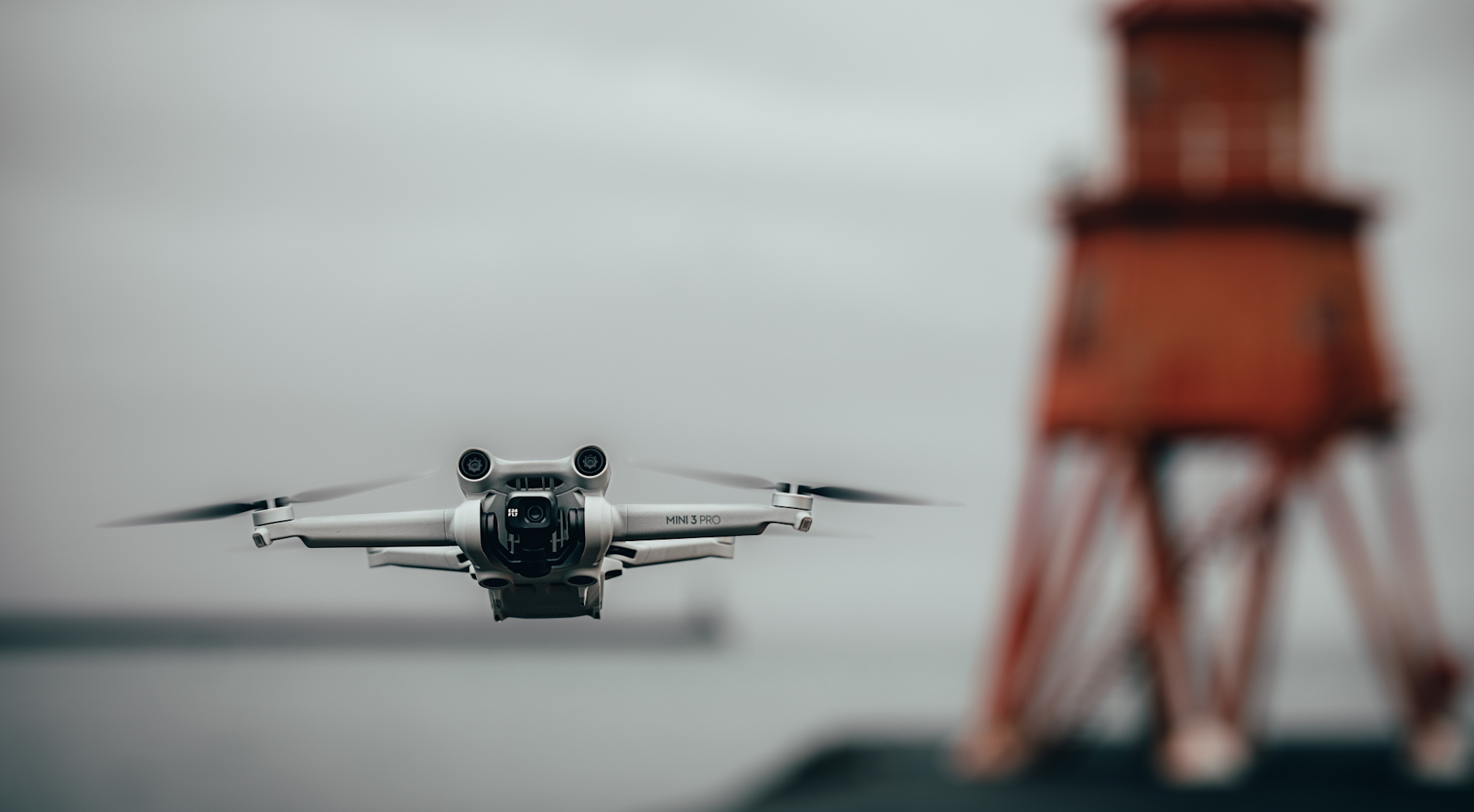
They can utilise Dronie, Circle, Helix, and Rocket, however, the Mini 3 Pro, Mini 3, Mini 2 SE, and Mini 2 provide users with the Boomerang function. In addition, the Mini 3 Pro has Asteroid mode.
So, what do these QuickShot modes bring to the table?
Dronie: The aircraft flies backward and ascends, with the camera locked on the subject.
Circle: The aircraft circles around the subject.
Helix: The aircraft ascends and spirals around the subject.
Rocket: The aircraft ascends with the camera pointing downward.
Boomerang: The aircraft flies around the subject in an oval path, ascending as it flies away from its starting points and descending as it flies back.
Asteroid: The aircraft flies backward and upward, takes several photos and then flies back to the starting point. The video generated starts with a panorama of the highest position and then shows the descent.
On top of the additional QuickShot mode, the Mini 3 Pro, Mini 3, Mini 2 SE, and Mini 2 have a dedicated Panorama functionality.
The Mini 3 Pro also has MasterShots. This cool feature is especially suited to new aerial content creators: Simply select your subject, and Mini 3 Pro will execute a sequence of pro manoeuvres, generating a short cinematic video afterward.
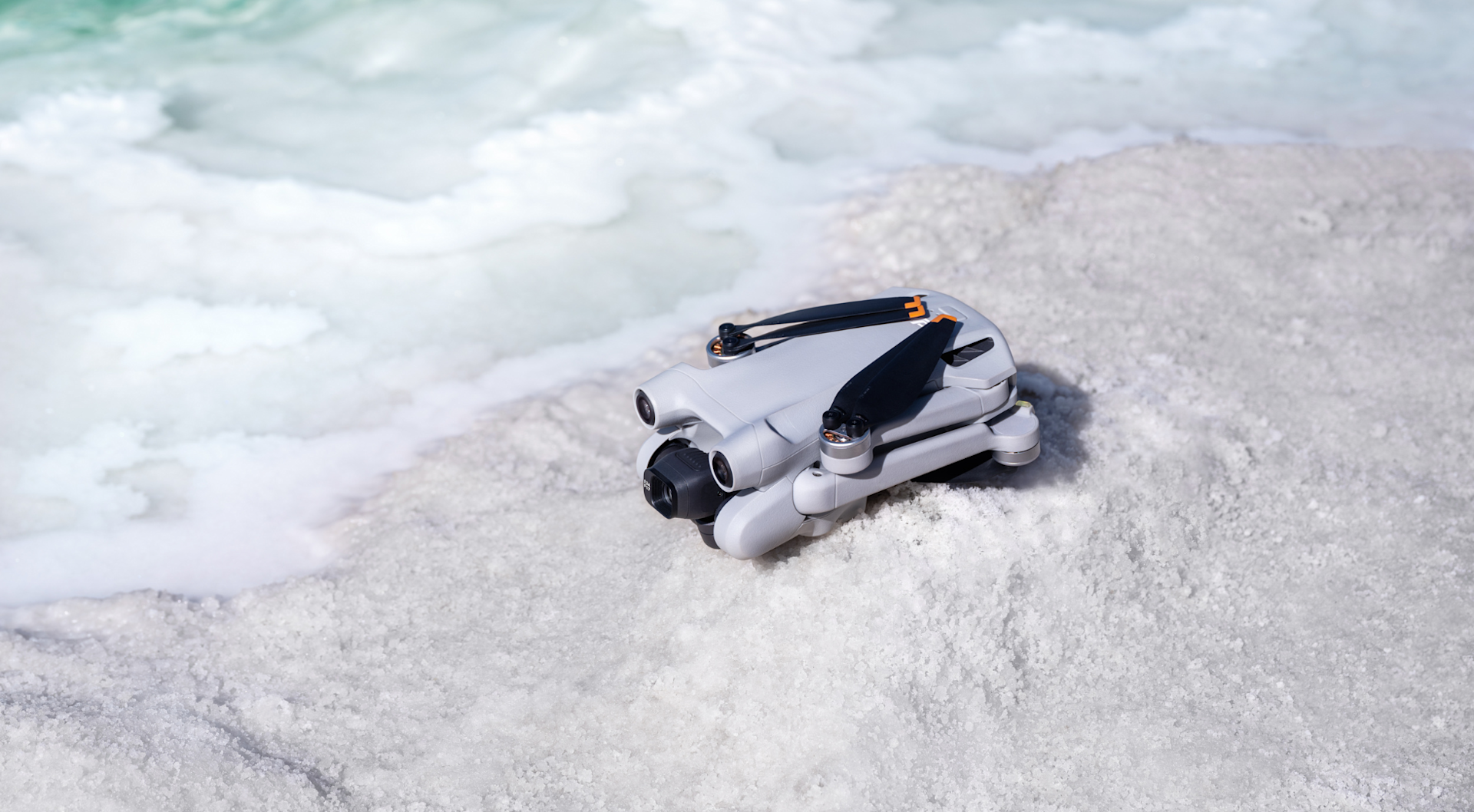
The Mini 3 Pro also has dedicated FocusTrack, which is a suite of subject-following tools.
This suite includes ActiveTrack 4.0, Spotlight 2.0, and Point of Interest 3.0, three powerful storytelling tools, as outlined below.
Spotlight 2.0: Keeps the subject in frame while you fly manually.
Point of Interest 3.0: Circles the subject in a set flight radius and speed.
ActiveTrack 4.0: Follows the subject in two selectable ways - Trace: The aircraft tracks the subject at a constant distance; or Parallel: The aircraft tracks the subject while flying beside it at a constant angle and distance.
The other Mini drones don't have dedicated FocusTrack, however, Litchi - one of the most popular third-party flight apps for DJI drones - did bring out a firmware update (version 4.20.0) to enable things like tracking and follow me for the Mini 2 and Mini SE.
All of the Mini drones utilise the DJI Fly App: An app which generates awesome videos with just a tap. Even beginners with no editing experience can turn any moment into a social media hit.
Flight Performance
The drones in the DJI Mini range are reliable and powerful performers, especially considering their small footprint.
The Mini 3 Pro, Mini 3, Mini 2 SE, Mini 2 and Mini SE have a Level 5 wind-speed resistance. All five can resist wind up to 10.7m/s.
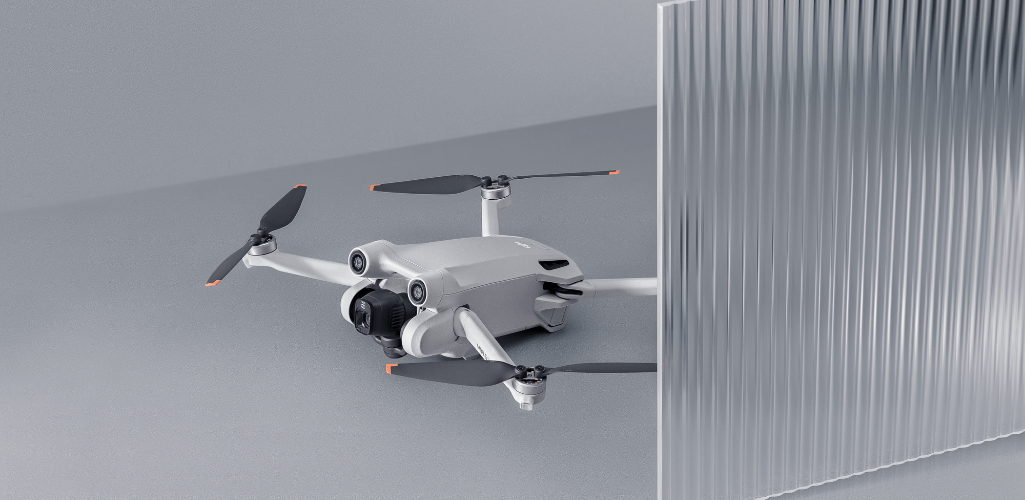
The Mini 3 Pro and Mini 3 are the most rugged of the five, with an operating temperature range of -10° to 40°C. The Mini 2 SE, Mini 2, and Mini SE all range from 0° to 40°C.
In terms of transmission distance, the Mini 3 Pro, Mini 3, Mini 2 SE, and Mini 2 utilise OcuSync, giving them stronger resistance against signal interference and automatic adjustments between two frequencies.
The Mini 3 Pro has the updated O3 transmission system, giving it a transmission range of 8km, while the Mini 3, Mini 2 SE, and Mini 2 use OcuSync 2 - or DJI O2 - with a transmission range of 6km.
On the other side of coin, the Mini SE uses enhanced WiFi, with a significantly shorter transmission range of 2km.
Please note that all of these transmission distances apply to the CE versions.
In other areas of performance, the Mini 3 Pro, Mini 3, Mini 2 SE, and Mini 2 are slightly faster (16m/s) than the Mini SE (13m/s).
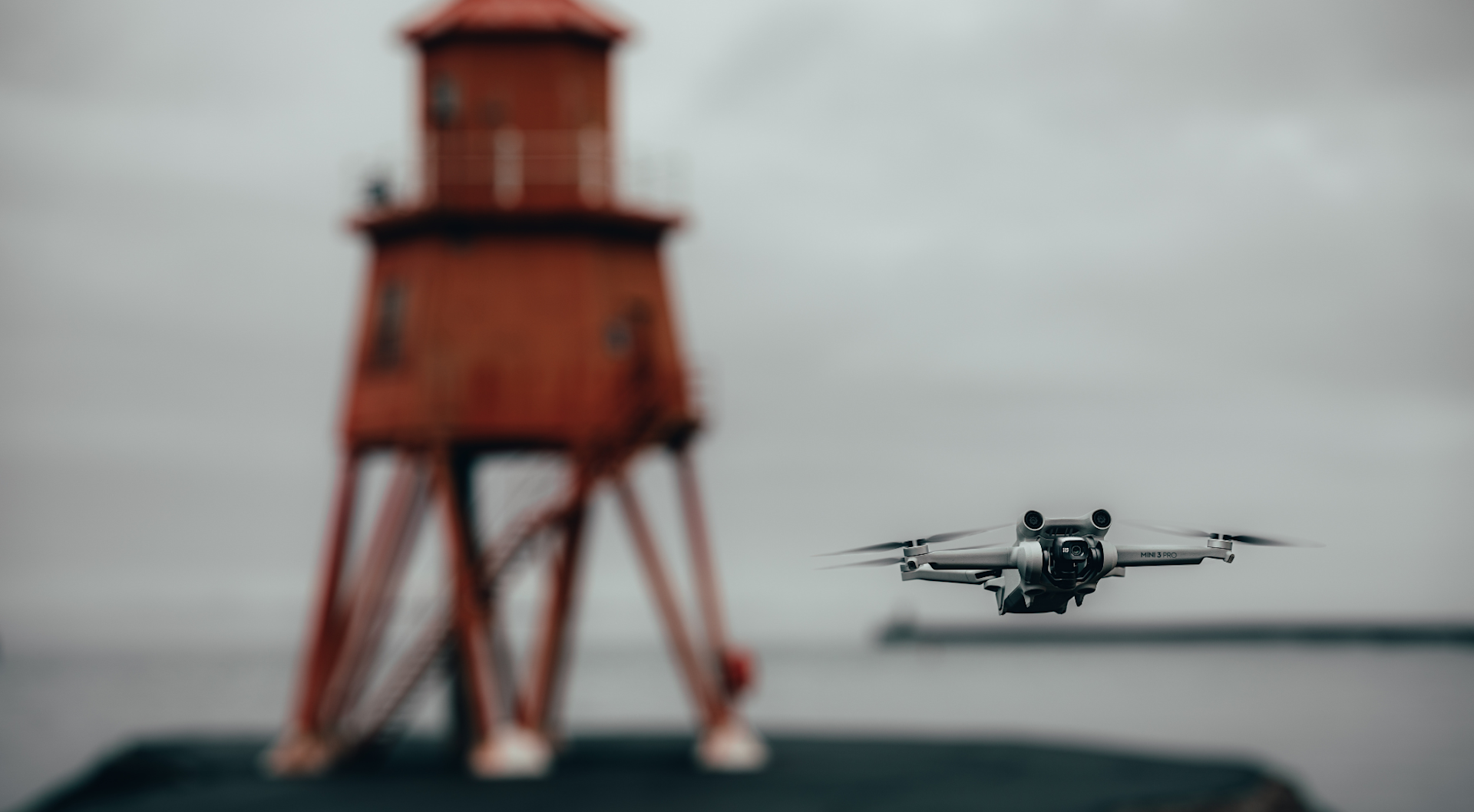
While the Mini 3 is a stripped-down, budget version of the Mini 3 Pro, it does actually have a longer flight time, with an impressive endurance of 38 minutes. In contrast, the Mini 3 Pro manages 34 minutes.
The others come in just shy of this, closer to 30 minutes. Regardless, this sort of flight time on such a small drone is seriously impressive.
For the record, the flight time of the Mini 3 Pro and Mini 3 can be extended thanks to the Intelligent Flight Batteries Plus (which make the drone heavier). Sadly, these are not being made available in the UK or the EU.
The table below provides an overview of their performance specifications.
Mini 3 | Mini 3 Pro | Mini 2 SE | Mini SE | Mini 2 | |
Max Flight Time | 38 mins | 34 mins | 31 mins | 30 mins | 31 mins |
Max Wind Speed Resistance | 10.7 m/s (Level 5) | 10.7 m/s (Level 5) | 10.7 m/s (Level 5) | 10.7 m/s (Level 5) | 10.7 m/s (Level 5) |
Max Speed (near sea level, no wind) | 16 m/s | 16 m/s (S Mode) 10 m/s (N Mode) 6 m/s (C Mode) | 16 m/s | 13 m/s (S Mode) 8 m/s (P Mode) 4 m/s (C Mode) | 16 m/s (S Mode) 10 m/s (N Mode) 6 m/s (C Mode) |
Max Ascent Speed | 5 m/s | 5 m/s (S Mode) 3 m/s (N Mode) 2 m/s (C Mode) | 5 m/s | 4 m/s (S Mode) 2 m/s (P Mode) 1.5 m/s (C Mode) | 5 m/s (S Mode) 3 m/s (N Mode) 2 m/s (C Mode) |
Max Descent Speed | 3.5 m/s | 5 m/s (S Mode) 3 m/s (N Mode) 1.5 m/s (C Mode) | 3.5 m/s | 3 m/s (S Mode) 1.8 m/s (P Mode) 1 m/s (C Mode) | 3.5 m/s (S Mode) 3 m/s (N Mode) 1.5 m/s (C Mode) |
Operating Temperature | -10°C to 40°C | -10°C to 40°C | 0°C to 40°C | 0°C to 40°C | 0°C to 40°C |
Max Transmission Distance (unobstructed, free of interference, and CE models) | 6 km | 8 km | 6 km | 2 km | 6 km |
Video Transmission - Live View Quality | 720p @ 30fps | 1080p @ 30fps | 720p @ 30fps | 720p @ 30fps | 720p @ 30fps |
DJI Mini Series - Safety Features
By default, the DJI Mini drones are incredibly safe because of their compact form and lightweight design.
But when it comes to the Mini 3 Pro, DJI has gone the extra mile to pack it with features to enhance in-flight safety.
In a first for the Mini drone series, DJI Mini 3 Pro features Tri-Directional Obstacle Sensing, consisting of forward, backward, and downward visual sensors.

The forward and downward sensors have a wider field of view, providing seamless coverage for better route planning and environmental awareness.
These sensors also enable Advanced Pilot Assistance Systems (APAS) 4.0, which automatically detects and finds a safer path around obstacles during flight. Note thought that APAS 4.0 is not available while recording 4K/48fps, 4K/50fps, 4K/60fps, 2.7K/48fps, 2.7K/50fps, 2.7K/60fps, or 1080p/120fps video.
In addition, these sensors also enable the entire FocusTrack suite, which allows users to select a subject that the drone automatically keeps within the center of the frame during flight while automatically planning a safe flight route.
Thanks to its upgraded sensing system, DJI Mini 3 Pro is the first of the Mini lineup to integrate APAS and FocusTrack.
In contrast, the Mini 3, Mini 2 SE, Mini 2, and Mini SE just have downward sensors.
The table below provides a breakdown of the sensing systems on all four Mini drones.
Mini 3 | Mini 3 Pro | Mini 2 SE | Mini SE | Mini 2 | |
Downward | Precise Hovering Range: 0.5-10 m | Measurement Range: 0.15-9 m Precise Hovering Range: 0.5-12 m Visual Hovering Range: 0.5-30 m Effective Sensing Speed: Flight Speed < 3 m/s FOV: Forward/Backward 104.8°, Left/Right 87.6° | Precise Hovering Range: 0.5-10 m | Operating Range: 0.5-10 m | Hovering Range: 0.5-10 m |
Forward | N/A | Measurement Range: 0.39-25 m Effective Sensing Speed: Flight Speed < 10.5 m/s FOV: Horizontal 106°, Vertical 90° | N/A | N/A | N/A |
Backward | N/A | Measurement Range: 0.36-23.4 m Effective Sensing Speed: Flight Speed < 8 m/s FOV: Horizontal 58°, Vertical 73° | N/A | N/A | N/A |
DJI Mini 3 vs Mini 3 Pro vs Mini 2 SE vs Mini 2 vs Mini SE - Remote Controllers
There is a difference in the type of controller between the Mini 3 Pro, Mini 3, Mini 2 SE, Mini 2, and the Mini SE.
The Mini 3 Pro and Mini 3 can be used with the DJI RC smart controller, which is a lightweight device with a 5.5-inch built-in touchscreen. With the DJI Fly app pre-installed, you can focus on flying and save your phone's battery.

Compatibility has also been given to the Mini 3 Pro to work with the DJI RC Pro smart controller - which has a brighter screen compared to the DJI RC, as well as some other extra features.
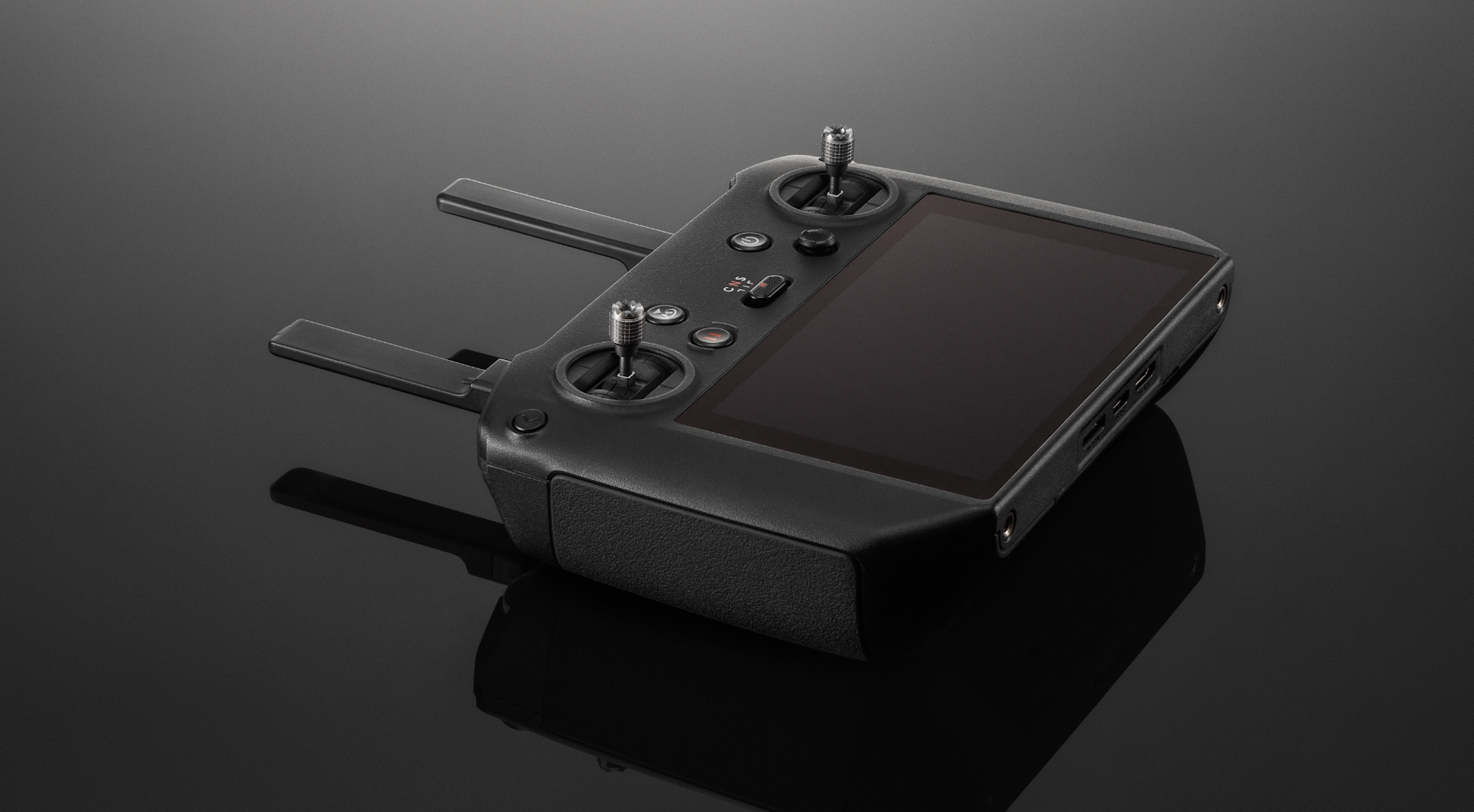
The Mini 3 Pro can also be used with the DJI RC Motion 2, which enables you to control the drone with your hand movements and can be used with DJI Goggles, such as the DJI Goggles 2 and DJI Goggles Integra.
The Mini 3 Pro and Mini 3 can also be used with the RC-N1 controller, which incidentally can also be used with the Mini 2 SE and Mini 2. This controller works in conjunction with a smart device.

In contrast, the Mini SE's controller feels more basic, with antennae at the top and fold-out arms beneath the joypad to grip the phone. It means that your phone live view screen is beneath the fold out antenna and body.

It is also worth noting that the Mini 2 can be used in conjunction with the DJI Smart Controller.
For a guide on DJI controllers, read our in-depth comparison blog: DJI RC Pro vs DJI RC vs RC-N1 vs DJI Smart Controller.
DJI Mini 3 vs Mini 3 vs Mini 2 SE vs Mini 2 vs Mini SE vs Mavic Mini - Price
Price can be a big factor in a purchasing decision and the DJI Mini series offers a broad spectrum of pricing offers, as the table below shows. Please note that pricing is correct as of March 15, 2023, but is subject to change.
Mini 3 | Mini 3 Pro | Mini 2 SE | Mini SE | Mini 2 |
• Drone (no RC): £439 • Drone (RC-N1 Controller): £519 • Drone (DJI RC Controller): £669 • Fly More Combo (with RC-N1 Controller): £678 • Fly More Combo (with DJI RC Controller): £828 | • Drone (no RC): £639 • Drone (with RC-N1 Controller): £709 • Drone (with DJI RC Controller): £859 | • Standard: £309 • Fly More Combo: 439 | • Standard: £269 • Fly More Combo: £359 | • Standard: £419 • Fly More Combo: £549 |
The Mini 3 Pro is the most expensive DJI Mini drone to date, but remember it has enhanced capabilities and performance specs, so it's more expensive price tag is understandable.
It means that anyone who wants that bit extra from their drone can do so with slightly more investment. And let's face it, the Mini 3 Pro is seriously impressive, so you are getting plenty of bang for your buck.
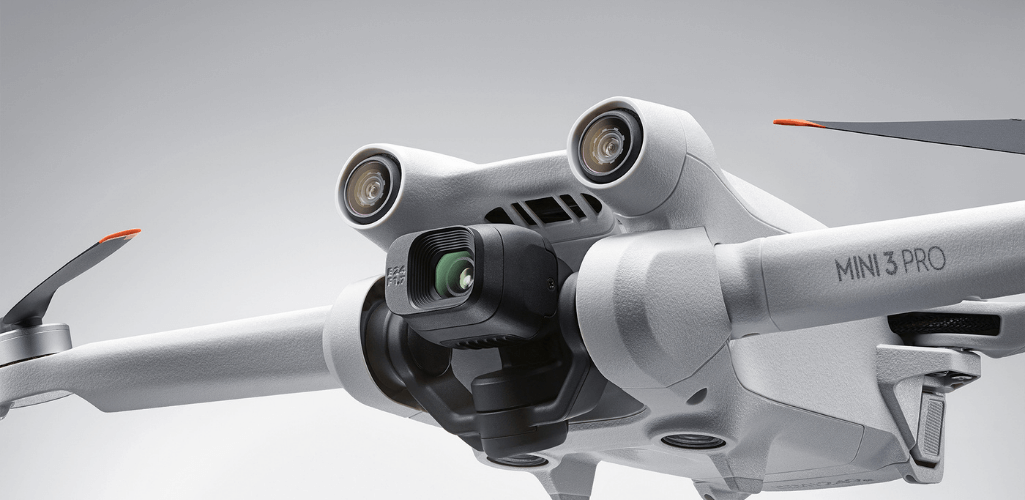
However, the recently-released Mini 3 is also worth plenty of consideration. Sure, it has some watered-down features compared to the Mini 3 Pro, but it is still a quality mini drone - and superior to the Mini 2, Mini SE and Mavic Mini - and available at a much more cost-effective price tag than the Mini 3 Pro.
On the other end of the spectrum, the Mini 2 SE offers incredibly good value for money. A cross between the Mini 2 and Mini SE, the Mini 2 SE does make some sacrifices, but for a beginner and/or for those on a budget, it is a stellar little aircraft, balancing performance, price, and portability.
All of this probably makes the Mini 2 and Mini SE a tad redundant, but they still may appeal to some operators.
DJI Mini Series: In The Box
The Mini 3 Pro has three options: The drone with no RC; the drone and RC-N1 controller; and the drone and DJI RC controller (pictured below).
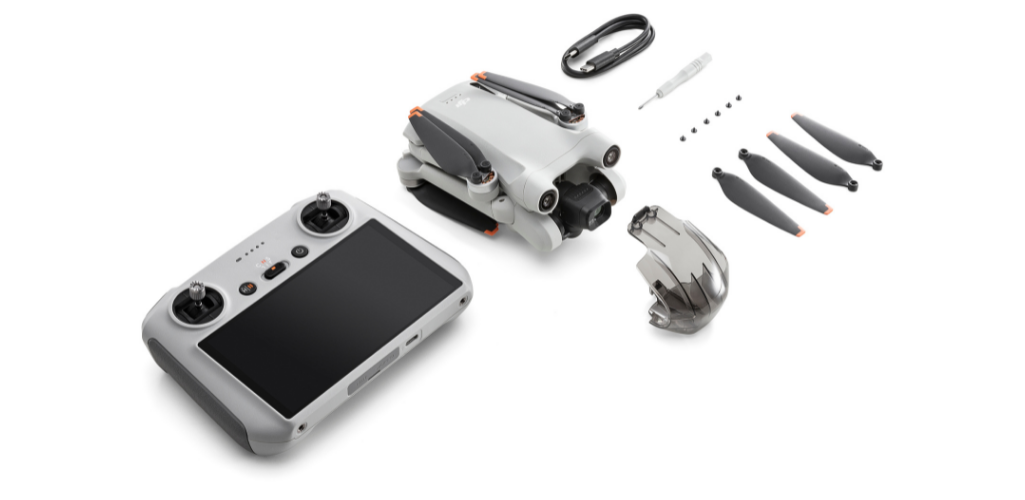
The Mini 3 has five options: Drone only; Drone with RC-N1; Drone with DJI RC; and then Fly More Combos, which feature either controller and additional accessories, like extra batteries, bag and charging hub, and work out cheaper than buying these accessories separately.
In the case of the Mini 2 SE, Mini 2, and Mini SE, the standard versions feature more than enough to get you started, ie the drone, controller, battery, spare props and ancillaries, while the Fly More Combo comes with extra batteries, a greater number of additional props, and also accessories like the two-way charging hub and carrying bag.
Purchasing the Combo is more cost-effective that buying the standard package and then adding these key accessories (two-way charging hub, bay, and extra batteries etc) retrospectively.
The Mini 3 Pro does not have a Fly More Combo in the same way as the other Mini drones. However, a separate Fly More Kit - featuring extra batteries, bag, charging hub and props - is available to make more of your missions.
DJI Mini Series - Summary
The innovative DJI Mini series has proved a firm favourite since launch, and the fact that there are now five drones in this family is testament to its popularity.
The original Mavic Mini was groundbreaking, and the Mini 2 built upon this solid foundation to provide a hugely impressive upgrade. The Mini SE is a combination of the two, essentially housing the Mavic Mini's features inside the Mini 2's body.
The Mini 3 Pro has upped the level again, redefining what is possible for a drone of this size. Stand-out features like enhanced safety, great camera specs and the awesome rotating gimbal make it a seriously attractive proposition.

The Mini 3 follows on the heels of the Mini 3 Pro, and while it lacks certain qualities of its more powerful counterpart, it is a top-quality mini drone - superior to the Mini 2 SE, Mini 2, Mini SE, and Mavic Mini - at a very attractive price point.
And in March 2023, DJI followed this with the Mini 2 SE, which is essentially a budget drone, blending the Mini 2 with the Mini SE.
Which Mini drone is for you is therefore down to personal preference.
For content creators or some commercial users wanting something extra with their footage, the Mini 3 Pro is the way to go, and you do get plenty for your money.
But as far as budget drones go, the Mini 3 or even the Mini 2 SE are worth a look.
To discuss the DJI Mini Series with heliguy™, contact us.
